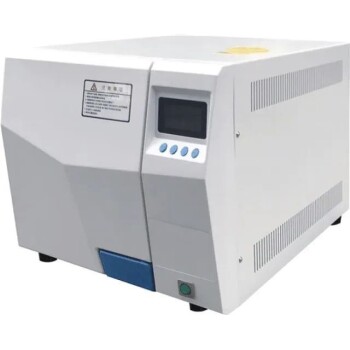A dry vacuum pump is a type of vacuum pump that operates without the use of oil or other lubricating fluids in the pumping chamber. Unlike oil-sealed pumps, dry pumps are designed to handle gases and vapors without contamination, making them ideal for applications where cleanliness and purity are critical. They are commonly used in industries such as semiconductor manufacturing, pharmaceuticals, and laboratories, where oil contamination could compromise processes or products. Dry vacuum pumps are known for their durability, low maintenance, and ability to handle aggressive or corrosive gases. They come in various designs, including diaphragm, scroll, and claw pumps, each suited for specific applications based on vacuum level requirements and chemical compatibility.
Key Points Explained:

-
Definition and Operation of Dry Vacuum Pumps:
- Dry vacuum pumps operate without using oil or other lubricating fluids in the pumping chamber.
- They rely on mechanical mechanisms, such as diaphragms, scrolls, or claws, to create a vacuum by compressing and expelling gas molecules.
- This design minimizes contamination risks, making them suitable for cleanroom environments and sensitive applications.
-
Advantages of Dry Vacuum Pumps:
- Contamination-Free Operation: Since no oil is used, there is no risk of oil backstreaming or contamination, which is critical in industries like pharmaceuticals and semiconductor manufacturing.
- Low Maintenance: Dry pumps have fewer components that require regular maintenance compared to oil-sealed pumps.
- Chemical Resistance: Many dry pumps are designed to handle aggressive or corrosive gases, making them versatile for a wide range of applications.
- Environmental Benefits: The absence of oil reduces waste disposal concerns and aligns with sustainability goals.
-
Types of Dry Vacuum Pumps:
- Diaphragm Pumps: Use a flexible diaphragm to create a vacuum. They are oil-free, quiet, and suitable for low to medium vacuum levels. Commonly used in laboratories for filtration, distillation, and solvent extraction.
- Scroll Pumps: Utilize two interleaved spiral scrolls to compress gas. They provide a clean, oil-free vacuum and are often used in analytical instruments and semiconductor processes.
- Claw Pumps: Feature rotating claw-shaped rotors that trap and compress gas. They are known for their durability and ability to handle high gas throughputs, making them ideal for industrial applications.
-
Applications of Dry Vacuum Pumps:
- Semiconductor Manufacturing: Dry pumps are essential in cleanroom environments for processes like chemical vapor deposition (CVD) and etching, where oil contamination could ruin delicate components.
- Pharmaceuticals: Used in freeze-drying, distillation, and solvent recovery, where product purity is paramount.
- Laboratories: Ideal for applications like mass spectrometry, rotary evaporation, and Schlenk lines, where a clean vacuum is required.
- Food and Beverage Industry: Employed in vacuum packaging and bottling to ensure hygienic conditions.
-
Comparison with Oil-Sealed Pumps:
- Oil-Sealed Pumps: Use oil to seal and lubricate the pumping mechanism, providing strong and consistent vacuum levels. However, they pose a risk of oil contamination and require regular oil changes and maintenance.
- Dry Pumps: Eliminate the need for oil, reducing contamination risks and maintenance requirements. While they may not achieve the same ultra-high vacuum levels as oil-sealed pumps, they are sufficient for most industrial and laboratory applications.
-
Key Considerations for Purchasing a Dry Vacuum Pump:
- Vacuum Level Requirements: Ensure the pump can achieve the required vacuum pressure for your application (e.g., rough, high, or ultra-high vacuum).
- Chemical Compatibility: Verify that the pump materials can handle the gases or vapors involved in your process.
- Throughput and Pumping Speed: Match the pump’s capacity to the volume of gas you need to evacuate.
- Noise and Vibration: Consider the operating environment, as some pumps are quieter and produce less vibration than others.
- Maintenance and Lifespan: Evaluate the pump’s durability and ease of maintenance to minimize downtime and operational costs.
By understanding these key points, a purchaser can make an informed decision when selecting a dry vacuum pump, ensuring it meets the specific needs of their application while providing long-term reliability and performance.
Summary Table:
| Aspect | Details |
|---|---|
| Operation | Oil-free, uses mechanical mechanisms like diaphragms, scrolls, or claws. |
| Advantages | Contamination-free, low maintenance, chemical resistance, eco-friendly. |
| Types | Diaphragm, scroll, and claw pumps. |
| Applications | Semiconductors, pharmaceuticals, laboratories, food & beverage. |
| Key Considerations | Vacuum level, chemical compatibility, throughput, noise, maintenance. |
Ready to find the perfect dry vacuum pump for your needs? Contact us today for expert guidance!









